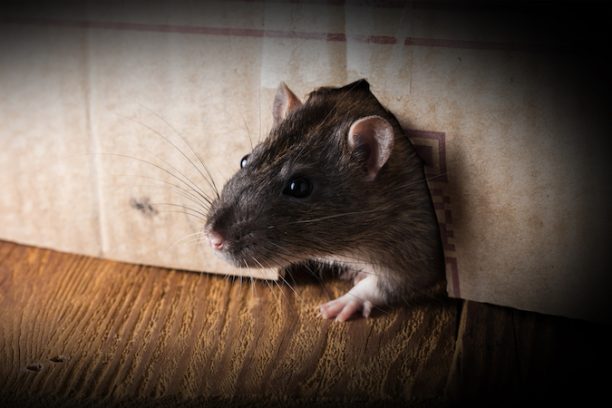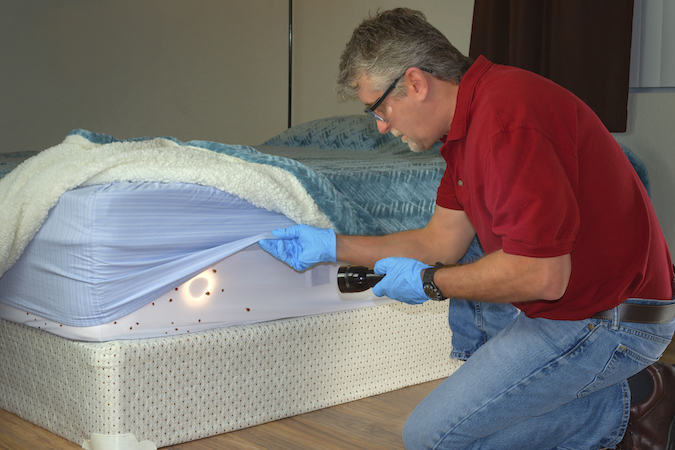Adult ants species come in various shapes and sizes, but each will be one of three different colony castes; queens, workers, or males. Queens are fertile females that lay all the eggs in a colony (almost 300 a day!). Workers are wingless females that gather food, feed larvae, maintain the nest, defend the colony, and do not reproduce. Male ants are winged, and their only job is to mate with the queens during the swarming process.
Bed bugs tend to be reddish-brown in color, oval in shape, and are about 1/4 inch in length. An easy way to spot them is right after they have a blood meal. They will appear swollen and darker red due to the blood. Otherwise, they can be challenging to find. Bed Bugs multiply quickly, making early detection crucial to ensure you do not end up with a large infestation making the steps to treat this much more aggressive.
Mosquitoes belong to the same group as the true flies, Diptera. As such, they have a single pair of wings. They typically have long, thin legs and a head featuring a prominent proboscis. Mosquito bodies and wings most often are covered in tiny scales. Adult sizes may range from 3 to 9 mm. Mosquitoes are one of those unfortunate insects that are not only annoying but can also be dangerous disease-carrying pests. Mosquitoes are quite small, but you will know when they are around because of their irritating, itchy bites.
Rats are a common type of rodent. These pests can grow to be a few inches in length up to 10 inches. Rats often live near places with food scraps such as dumpsters and garbage cans. Although these pests can be found in the wild, they usually congregate in more populated areas like cities and towns. In addition to being tough to control, rodents may carry diseases and taint food with waste, fur, and saliva creating a dangerous environment for your home.
Spiders can be dangerous to you, your family, your pets, and your customers. While most spiders pose little or no danger to people, some species can deliver venomous bites that can cause medical issues. In the U.S., the two most common venomous spiders are the brown recluse, distinguished by the violin-shaped marking on the top of its cephalothorax, the body part consisting of the spider’s fused together head and thorax. The other important venomous spider is the black widow, notable for the red hourglass shape on the underside of its jet-black abdomen.
Typically, the first signs of a wasp infestation are nests somewhere near your home or business property. The nests look like honeycombs, but they are small and rounded. You’ll usually find them outside, but they can make their way into your home or building, which is a much more serious type of infestation. When wasps are building their nests, they’re looking for a place that’ll shelter their young, so structures such as sheds, window frames, and decks are usually where wasps will build their nests. Wasps near the home can ruin outdoor activities and make yardwork difficult. While they rarely go out of their way to sting, wasps may become hostile if threatened or disturbed. Their stings are painful but typically non-threatening to those without allergies to the wasp’s venom.
Showed up exactly on time very professional and curtious
Anthony M. | Howard Beach, NY Tweet


